I have almost finished the last big body fairing for Slippery, the processes for making it may be of interest:
First order of business is to scale a drawing from the period photo record, followed by various mockup stages to workout the correct profiles of its outer mould line. I usually position cardboard and paper mockups against the car and live with them for period of days, it is strange how the most jaring of errors in shape only apear after a break away from the workshop!
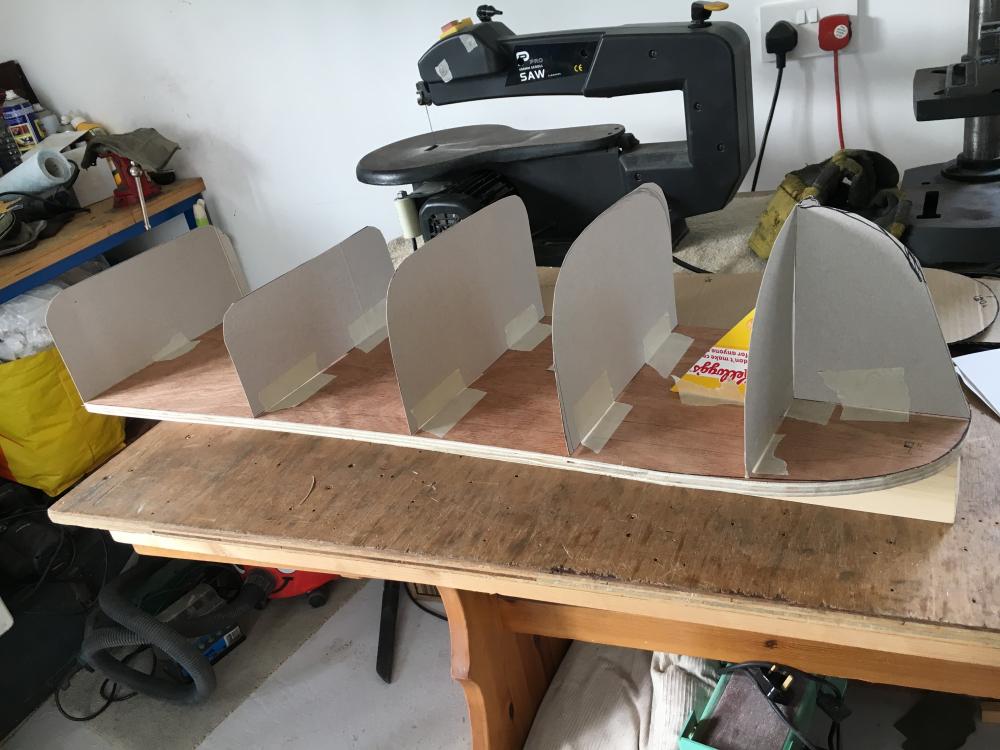
A wooden buck is used to from help get the metal forming right, firstly this is worked up in card.

Paper is then taped around the cardboard buck to create a 3 dimensional representation of the fairing and give confidence in the shape.

Fitted to the car, the paper fairing is left for a while, if all still looks good after a few days, I finalise the wooden buck.
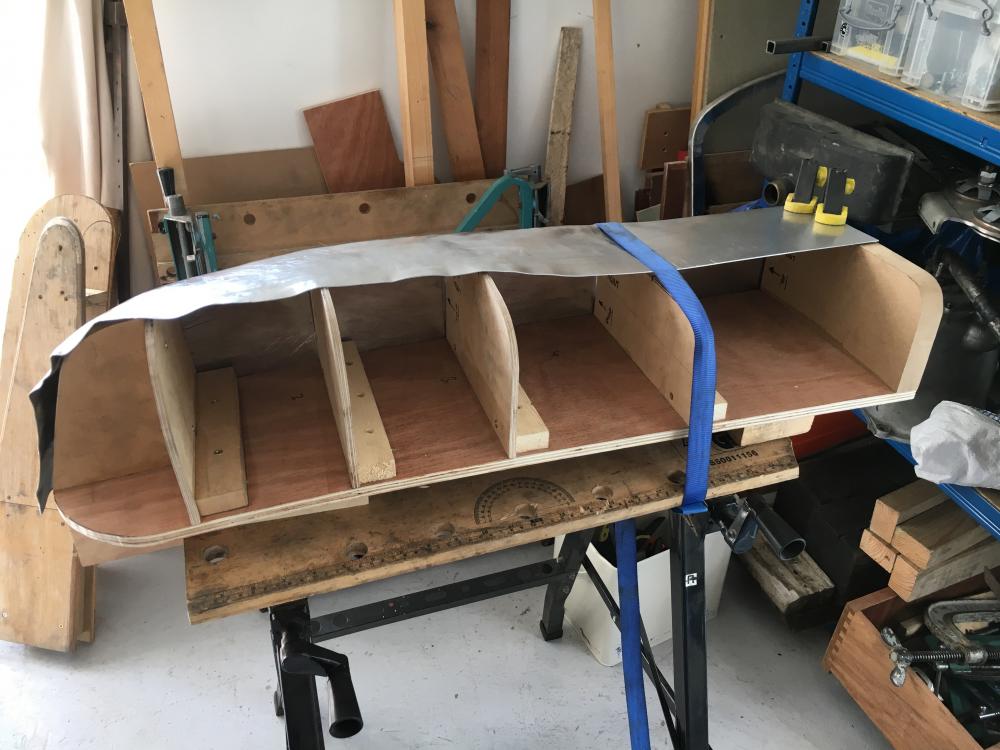
First the metal is formed to fit closely to the buck, The metal is not bashed to shape on the buck, for which I use a leather shot bag and wood block, but I do make the buck strong enough so that the metal may be 'encouraged' with a few deft blows of a suitable hammer/mallet.
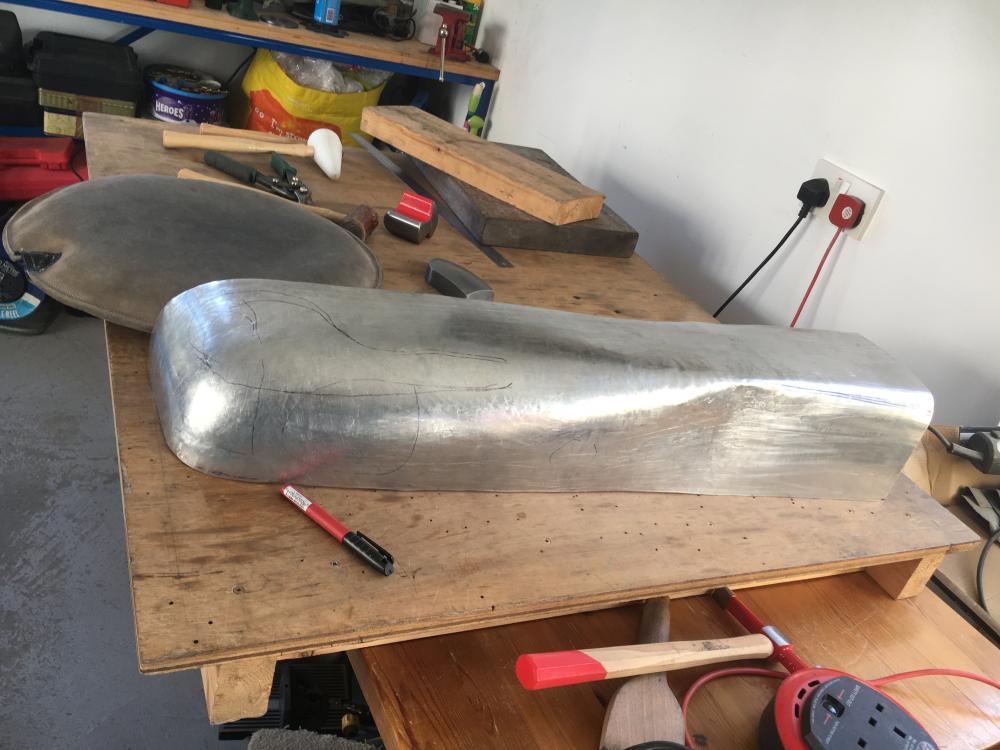
Once the panel starts to look close to the correct shape, I start to refine the finish with my wheeling machine, in this instance I am making the fairing in two parts and welding the shells together.
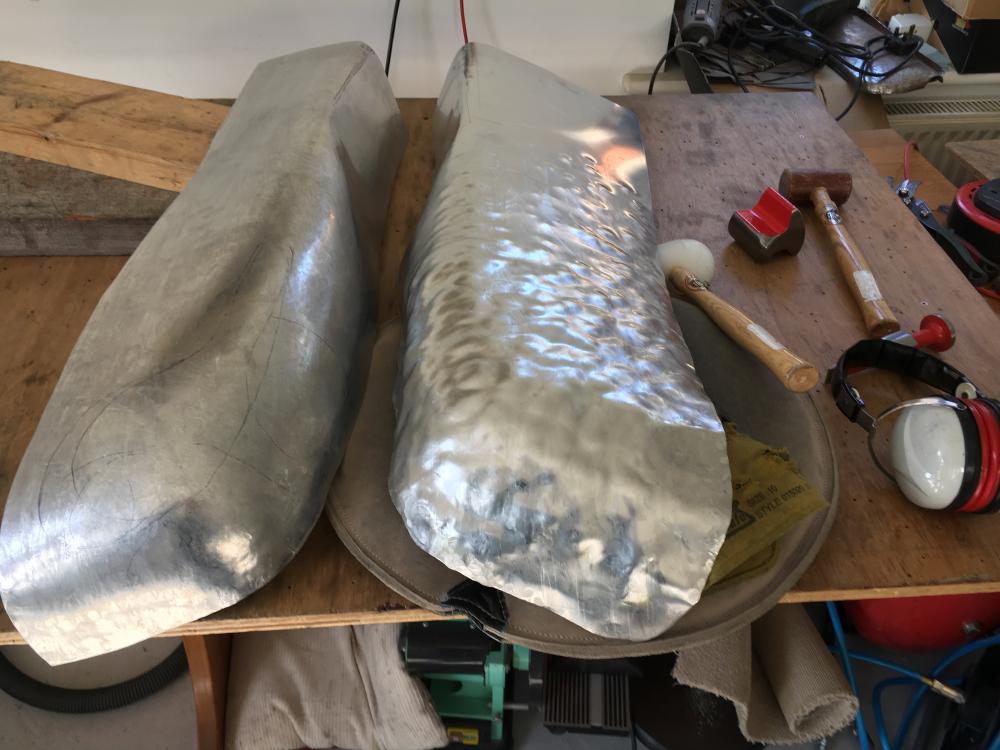
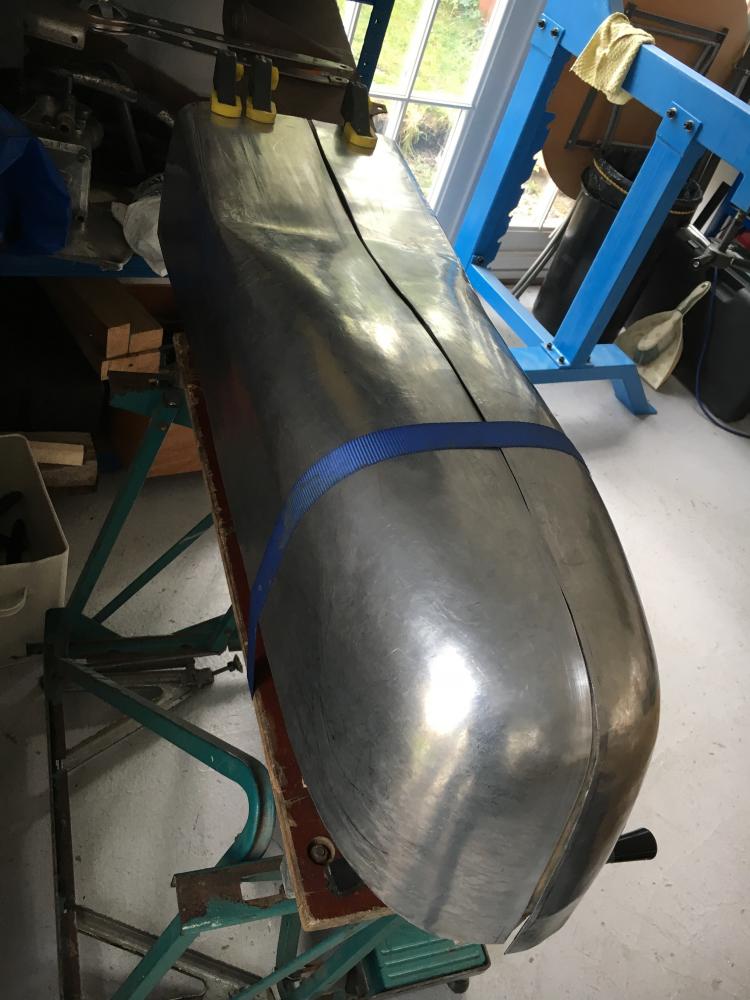
Once the two parts are a very close fit to the buck and the joint is very closely matched, it is ready for welding

Once welded, the fairing is redy for cleanup of the joint to remove excesses weld, then the final shape is worked into the metal and the joint is wheeled to harden it and finish the whole of the fairings finish.
Welding thin aluminium so that it is possible to make the joint both strong and workable while ensuring a good finish requires some thought, the joint you see here was fist welded on the outside using a rod, which does add material, then the joint was welded again on the inside without a rod, which pulled the first weld in, it required no cleanup on the inside face, but did need working over with my angle grinder and a file on the raised joint of the outter face. It is possible to not use a rod, and make a very clean joint but, this approach requires a perfect joint with no gaps and that the joint be welded 3 times to make it strong enough, holes are always blown into the metal which then need punched bits of aluminium to be knocked into them with a hammer, then welded in etc etc.
Wheeling the fairing

Before bending the attachment flanges the new fairing is offered up to the car, albeit, the exces metal required for the flange make the whole thing sit 3/4" to far out, it enables a considered assessment of its fit and shape.



It is just possible to see the welded joint in these pictures. as it is slightly darker, but it is otherwise undetectable.
All the best, Mark.




